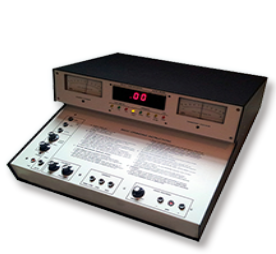- Qinsun Instruments Co., Ltd.
- Tell:+86-21-6780 0179
- Phone:+86-17740808215
- Address:No. 2578 Minhang District Gu Dai Road, Shanghai
- Contact:Mr. Li
- QQ:846490659
ETS-406D electrostatic attenuation tester

1. Applicable scope:
The 406D tester can be used in the laboratory to analyze the static characteristics of materials themselves, evaluate the efficacy of anti-static additives, and develop new types of electrostatic protection materials. At the same time, this device can also be used as a product quality control device in the production and manufacturing field, to perform static electricity characteristic detection and monitoring according to various standard specifications.
2. Compliant with standards:
US Nonwoven Fabric Static Attenuation Test Standard IST 40.2 (01), US Federal Standard FED-STD-101C (Method 4046), US Military Standard MIL-B-81705C, US Military Standard MIL-PRF-81705D, Chinese GB 19082, Chinese Military Standard GJB2625
3. Product details:
The 406D electrostatic attenuation tester adopts the DC charging method and is a complete material electrostatic characteristic testing system that complies with the US military standard method 4046. This device is a standard equipment that complies with the US military standard MIL-PRF-81705D for testing whether materials are qualified. 406D complies with the American non-woven fabric static attenuation testing standard IST 40.2 (01), the American federal standard FED-STD-101C (Method 4046), the American military standard MIL-B-81705C, the Chinese GB 19082, and the Chinese military standard GJB2625.
The 406D configuration magnetic suction rod is used for testing thin film and fabric materials; Metal fixtures can test thicker blocks, foams, or other materials of shape and texture. Optional IC tube type fixtures can be used for non-destructive testing of IC chip packaging tubes; The optional 806B non-destructive testing electrode can be directly placed on the sample and can also be used to test the electrostatic decay time of powder and liquid.
The supporting Faraday test cage provides a shielding space, and the sample is placed inside the Faraday cage for testing. The Faraday cage is connected to the 406D host through a matching connecting wire. The Faraday cage has an interlock device, and when the Faraday cage is opened, the high-voltage power output is cut off.
The STM-2 verification module provides a standard resistor, and the capacitance is directly taken from the system capacitance. By testing the STM-2 standard module, it can be verified whether it is functioning properly.
The electrostatic pressure detection head located inside the Faraday cage can be removed and placed on the 806B non-destructive electrode to directly test powder, liquid, and solid samples.





